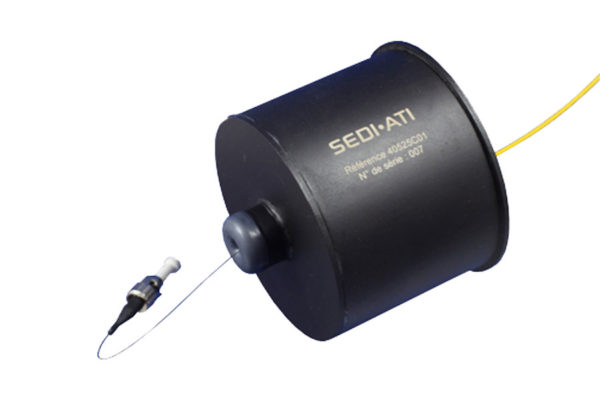Fiber optic technology has revolutionized the telecommunications landscape, offering unparalleled speed and bandwidth. If you find yourself in possession of four spools of fiber optic cabling, it is imperative to recognize the value they hold in today’s burgeoning market. However, identifying the optimal venues for selling such specialized items can be a challenge. This discourse elucidates various avenues for the successful sale of fiber optic spools, while also encouraging a paradigm shift regarding their potential worth.
Firstly, the traditional retail marketplace serves as a formidable entry point for transactions involving fiber optic spools. Numerous hardware stores and telecommunications supply retailers cater specifically to professionals and DIY enthusiasts alike. Establishing a rapport with local businesses that emphasize electrical or network installations may yield mutually beneficial outcomes. Such enterprises often seek quality materials at reasonable prices, and your spools could satisfy their procurement needs.
In addition to physical retail outlets, the realm of online marketplaces presents a myriad of opportunities. Platforms such as eBay and Craigslist provide an expansive audience, allowing sellers to reach potential buyers beyond geographic boundaries. eBay, in particular, employs an auction-style format that can generate competitive bids, potentially elevating the selling price of your fiber optic spools. The allure of diverse bidding can provoke curiosity and drive urgency among buyers, enhancing the likelihood of a profitable sale.
Beyond conventional platforms, specialized forums dedicated to telecommunications and networking also merit consideration. Websites such as Fiber Optic Forum foster communities of technicians and engineers who may be actively seeking fiber optic solutions. Participation in discussions or classified sections on these platforms can facilitate direct interaction with a niche audience and elevate the visibility of your merchandise. Engaging with such platforms not only broadens your reach but also demystifies the processes surrounding fiber optic technology for interested parties.
Furthermore, consignment sales through local electronics or technology shops can prove advantageous. When engaging with these retailers, it is prudent to highlight the spools’ specifications, including fiber type, length, and condition. Establishing a consignment agreement allows retailers to act as intermediaries, handling the sales process while you retain ownership until the items are sold. This arrangement can mitigate the challenges associated with direct sales while simultaneously granting your spools exposure to the appropriate clientele.
Another avenue to explore involves leveraging your professional network. Networking within fields such as information technology, telecommunications, or construction can facilitate the identification of potential buyers. Attending industry conferences and trade shows presents an opportunity not just to sell but to forge connections with entities that may require fiber optic materials. The exchange of business cards and the establishment of personal rapport can often lead to lucrative transactions.
On a more creative note, engaging with educational institutions may yield unexpected prospects. Schools and universities that offer courses in telecommunications, computer networking, or electrical engineering might be interested in acquiring fiber optic materials for instructional purposes. Proposing a donation or a discounted sale could not only ease their cost burdens but also enhance their practical training resources, creating goodwill and community engagement.
Meanwhile, local or regional auctions are an often-overlooked venue for selling surplus materials. These events attract a diverse array of bidders, including contractors and hobbyists. Listing your fiber optic spools as part of auction inventory may captivate participants seeking specific components for their projects. It is essential to adequately promote your items leading up to the auction to increase their appeal, providing detailed descriptions and highlighting their condition and potential applications.
In the realm of digital marketing, the utilization of social media platforms presents a powerful avenue to attract attention to your offerings. By posting thoughtful and engaging content about fiber optics on platforms such as Facebook, Instagram, or Twitter, sellers can cultivate a following that appreciates the nuances of this technology. Through strategic hashtags and targeted outreach, your posts can reach individuals actively seeking materials, thereby transforming a casual browse into an informed inquiry.
The realm of waste management and recycling materials also presents intriguing prospects for those looking to offload surplus fiber optic spools. While not a direct sale, many recycling firms now accept electronic and telecommunications components for material reclamation. This path might not yield direct monetary gains, but it allows individuals to dispose of unwanted materials responsibly, aligning with sustainable practices.
Upon considering these potential avenues, it becomes evident that the market for fiber optic spools is rife with possibilities. The key lies in adopting an innovative mindset while exploring various channels. Curiosity about the various applications of fiber optics—including telecommunication, automotive, medical instruments, and beyond—can drive interest in your spools. Each potential buyer harbors unique needs that your product could fulfill, thus reinforcing the notion that no opportunity should be overlooked.
As the demand for high-speed communication continues to escalate, the potential market for fiber optic materials is unlikely to diminish. By employing a multifaceted approach to selling your spools—ranging from local retail to online platforms and specialized forums—you can secure tangible returns on your investment while contributing to an enduring paradigm shift in fiber optic utilization. With effort, innovation, and an understanding of the market, what may initially appear as surplus can transform into a valuable asset.










